Our final night at Sach’a Munay, we had a traditional pachamanca dinner. Having never been to Peru before, I didn’t know what to expect, but we were told if we wanted to find out, that we should show up in an open space between the guest rooms and the office at the base of the hill, near the large, stunning organic garden that’s fed by the permaculture system that runs through Sach’a Munay.
I was the first to arrive. The cooks were there with a semi-circular outdoor oven, constructed just for this dinner, out of rock. What looked like charcoal was stacked on top, but I couldn’t tell for sure. Under the charcoal—or charcoal like rock, was a large hole and a flat rock on top. Curved pieces of clay, that looked like roof tiles, leaned up against the sides.
Pachamanca means earth oven and this was the oven. There was already a roaring, wood oven inside.
When the oven was hot enough—and our resident scientist, Glen, said it was a good 2000 degrees inside, the main cook, who cut his teeth cooking on the Inca train, and his assistants, quickly began throwing white potatoes and sweet potatoes—unwrapped and raw—in through the hole in the top. They landed and scattered across the hot rocks underneath.
Next, they placed the dressed guinea pigs, wrapped in foil, down the same center hole. Many more packets of unidentified food, wrapped in silver, quickly followed. Whole plantains were thrown on top of the silver packets and a rainstorm of fava beans poured down on top of all of that. All of this took five minutes. In the next minute, working at lightning speed, the workers took huge armfuls of alfalfa and completely engulfed the whole oven in an avalanche of green. The workers moved so fast, their hands were a blur. Next, and just as fast, they covered the greens with layers of plastic, and then frantically shoveled huge amounts of dirt over the whole thing. Speed seemed to be of the essence. After shoveling on the dirt, they patted it down. Only then did they step back and relax.
I whispered to the woman standing next to me, “How will they possibly know when everything is done?”
Apparently, it would all be cooked in 25 minutes.
Half an hour later, we waited in the dining room for the feast to be revealed. Valentin, whose wonderful cooks had made the panchamanca, prepared us for our meal: “This is traditional dish, but very special. Peru is not the only country who makes food in the ground like this. This was the first cooking method. Food made like this has been prepared by aboriginal people all over the world before clay pots were available. We have panchamanca once a year maybe, for special festivals. And this is a very special occasion.”
The food being rolled out on the table was beautifully displayed and amazing in its diversity. How everything got cooked perfectly at the same time, I’ll never know, but it was all delicious.
Well, it was all delicious except for one thing. I can’t say I’m sold on guinea pig. You have to understand that I’m adventurous in many ways, but I’m not a very adventurous eater. My kids split a tarantula—that looked like a tarantula—for dinner at a restaurant in Cambodia—and there is no way I’d ever go that far. I did, however, eat a bear once. I was working as a reporter for KRBD-FM in Ketchikan, Alaska, covering a Republican party fundraiser, and the hostess, dressing in a spangled red, white and blue outfit came around with a platter of bear teriyaki. Her husband had been hunting the week before. I took a bite and I chewed and I chewed and I chewed and I chewed. It was like meat squared. I just kept chewing. The whole time I was chewing that bear, I kept thinking, “I’m eating a bear. I’m eating a fucking bear!”
I’d survived that experience so I figured I should try guinea pig, too. Besides, Valentin had taunted all of us, “If you don’t try guinea pig, you haven’t been in Peru.”
They’d cut the guinea pig up in tiny pieces and I took one, but once it was on my plate, I couldn’t figure out how to eat it. I found one little morsel of meat in the midst of a lot of connective tissue and tiny bones, and tasted it. It chewed easily–nothing like the bear. But how did it taste? A bit like chicken?
But there were too many other wonder things on my plate to give it a second try: chicken (perfectly cooked), two kinds of fish (both tender and flaky), white potatoes, sweet potatoes (I love potatoes in all forms), yucca (bland and flavorless), plantains (yum, already a big favorite), tomato (definitely a new variety), fava beans (we were told to peel these twice—I did, and they were delicious). There was even a zucchini stuffed with cheese, spinach and tomato for the vegetarians. Everything was perfectly cooked—in a two thousand degree fire covered with alfalfa, plastic and dirt. How could that be?
Just as we sat down to eat, all the lights went out, and Gonzalo and his staff immediately brought out small lanterns. I have no doubt the power goes out here on a regular basis. I thought we were going to be eating our pachamanca by lantern light—which seemed fitting—but just a few minutes later, the lights came back on.
Then, as we were barely into our food, we heard a flute and the pounding and a drum, and two musicians came around the corner—and serenaded through our dinner on multiple instruments: a guitar, a small guitar-like instrument called a charango, four flutes or pipes and a drum. The music was ethereal and earthy at the same time, exactly what I hoped it would be when I’d dreamed up how I wanted this last night at Sach’a Munay to go many, many months ago. Pretty soon people were up dancing—in short bursts as long as the altitude would allow them to dance. It was the perfect culmination to our week here in the Sacred Valley. Tomorrow we head to Machu Picchu.
I felt happy and deeply fulfilled.
Boy, I am going to miss this place.
Check the captions on the photos, too.

Starting the fire.
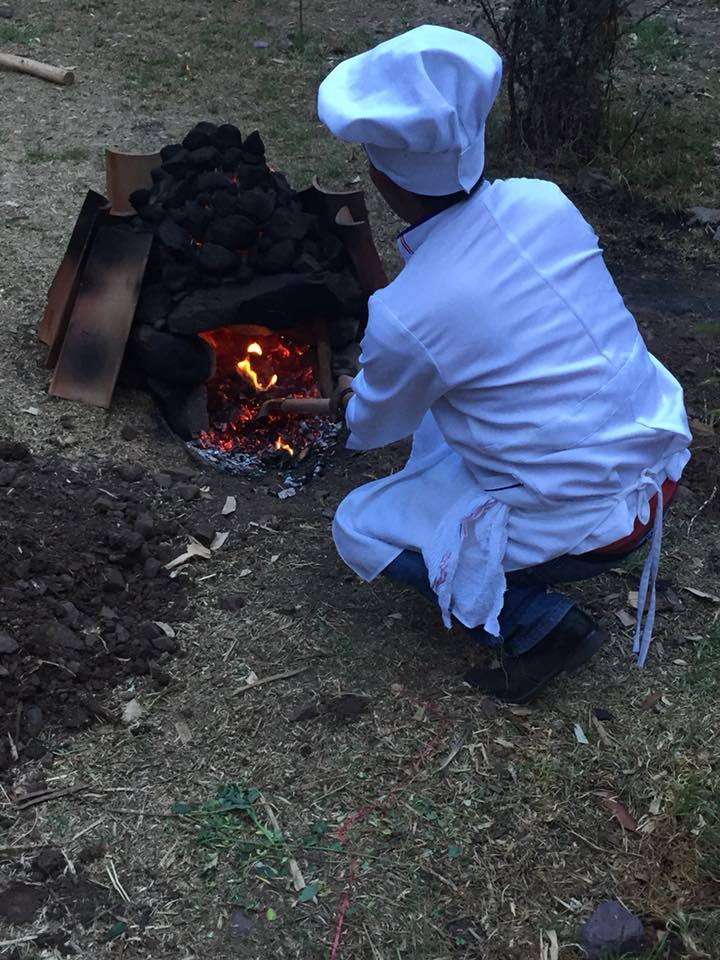
Tending the fire.
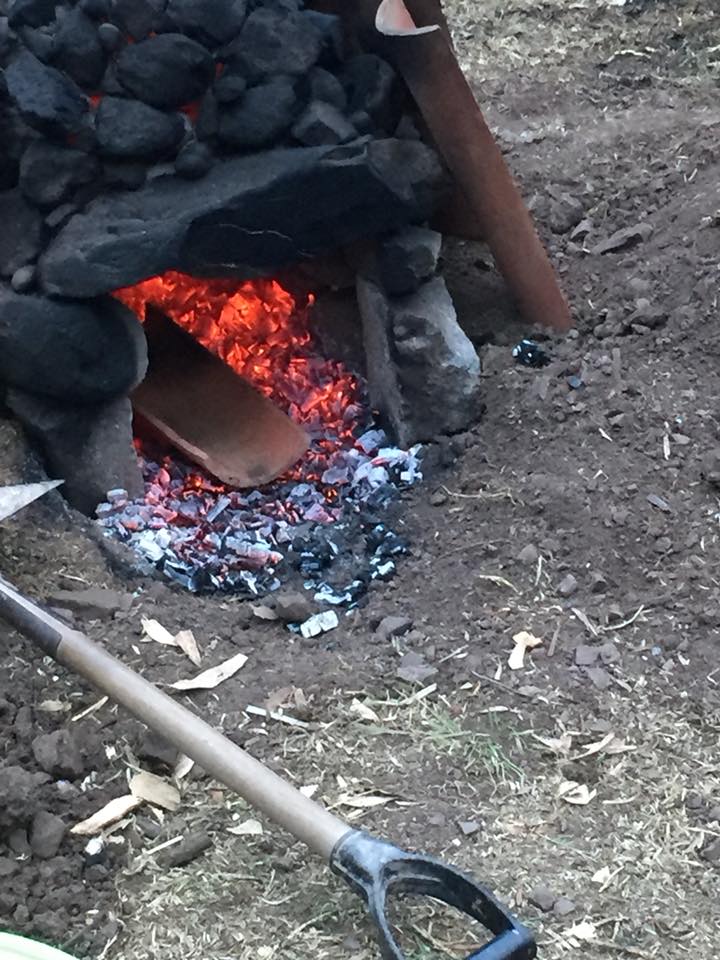
The fire is almost ready.
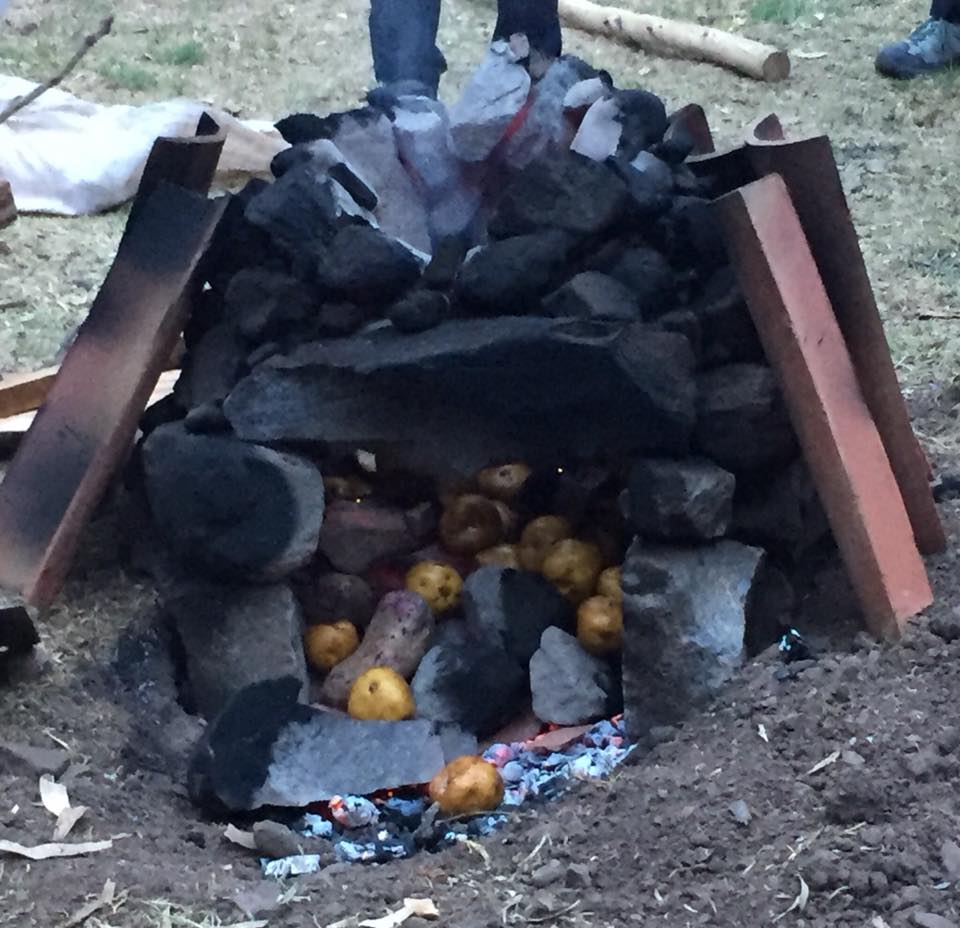
Potatoes in the coals.
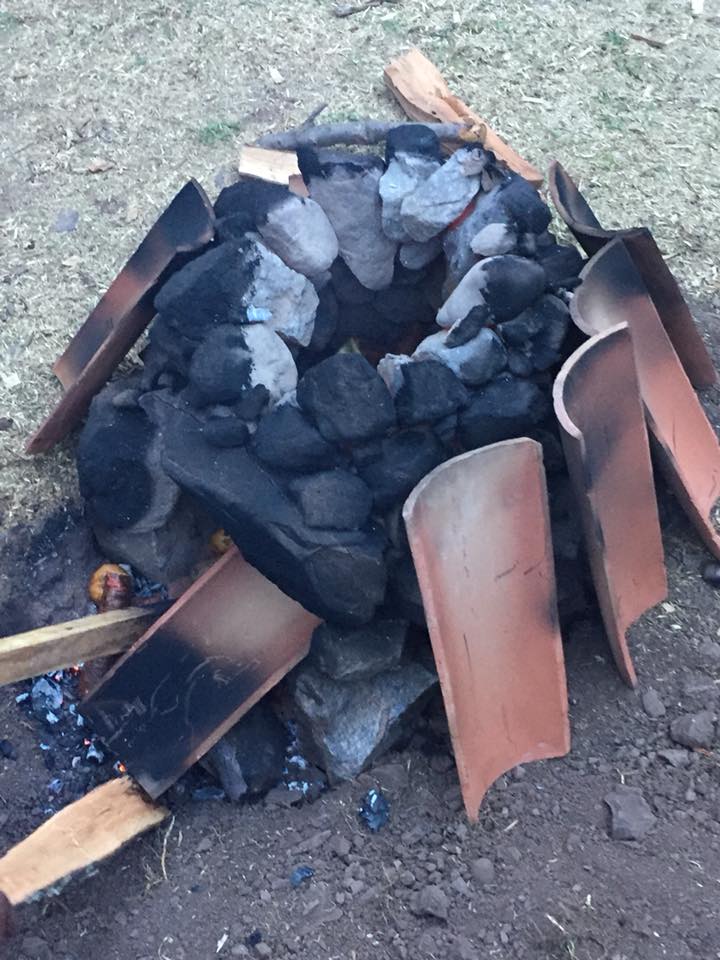
The oven from the top.

Here’s the guinea pig.
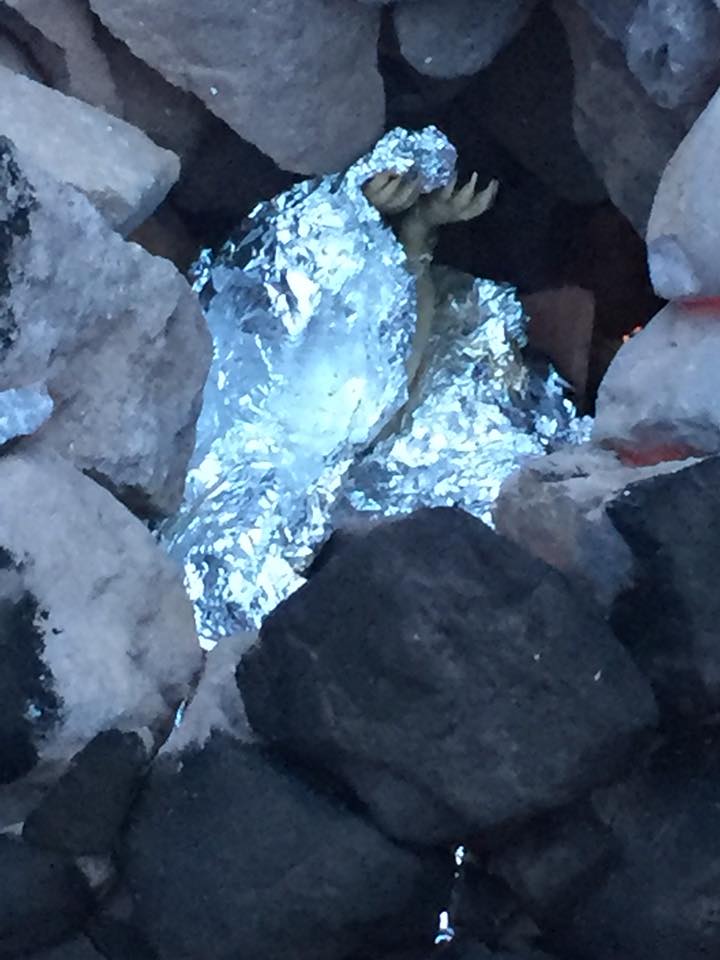
See the feet.
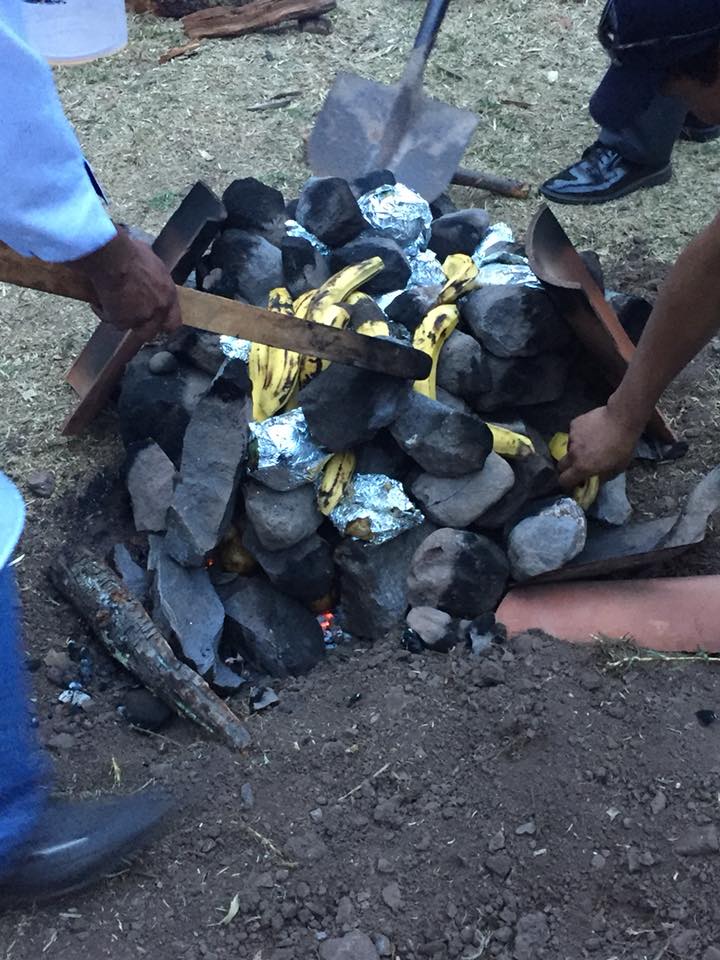
Platanos on the fire.
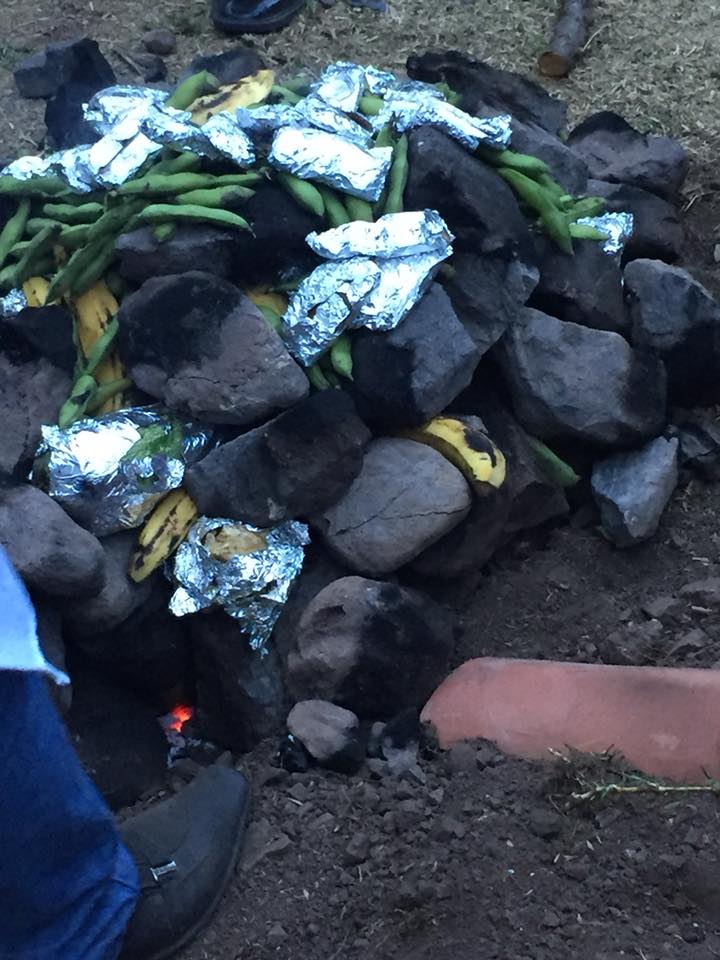
On goes the fava beans.
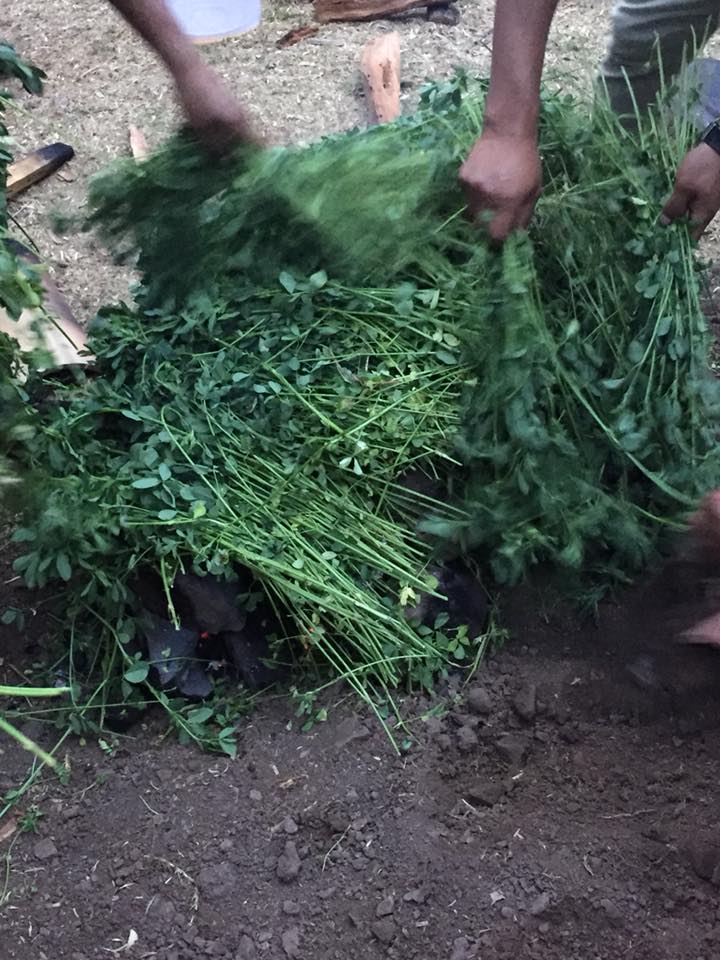
Alfalfa at lightning speed.
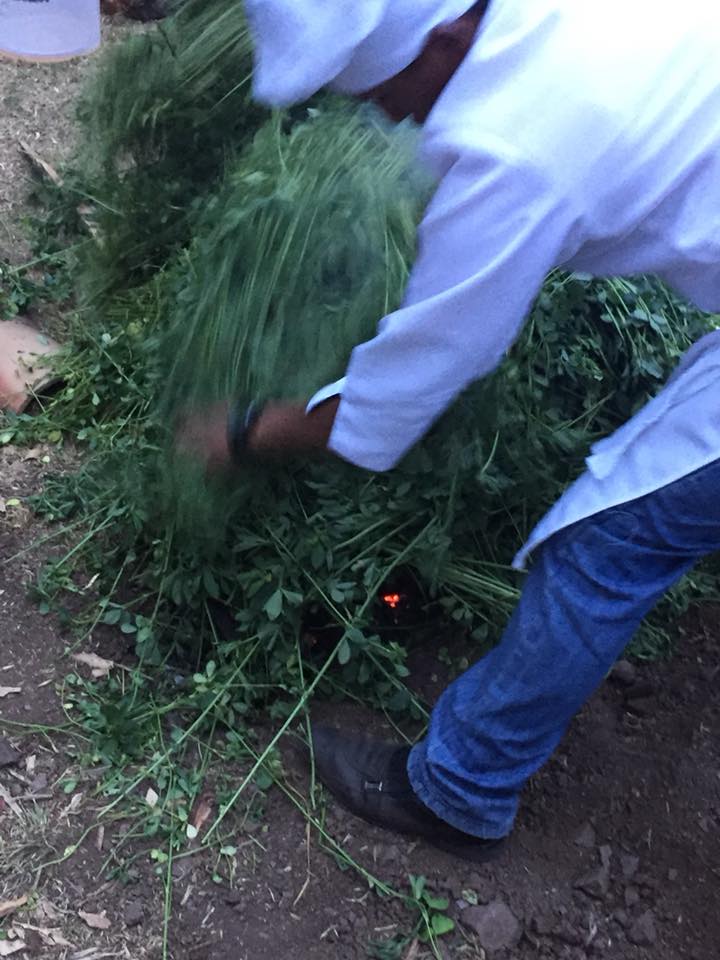
They moved fast.
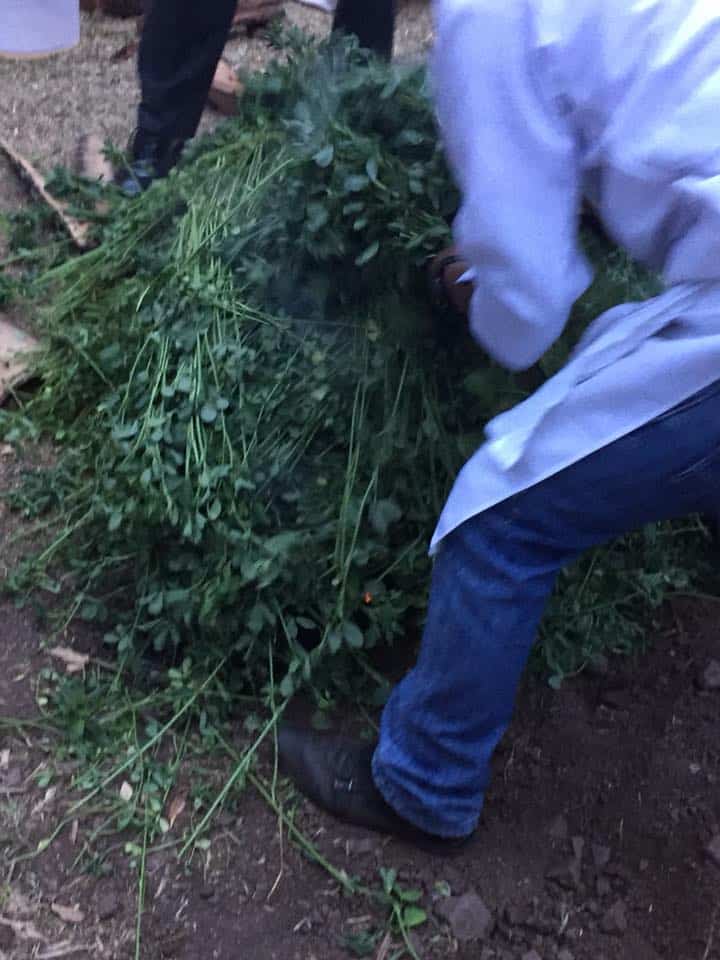
Until it was all covered up in a mountain of green.
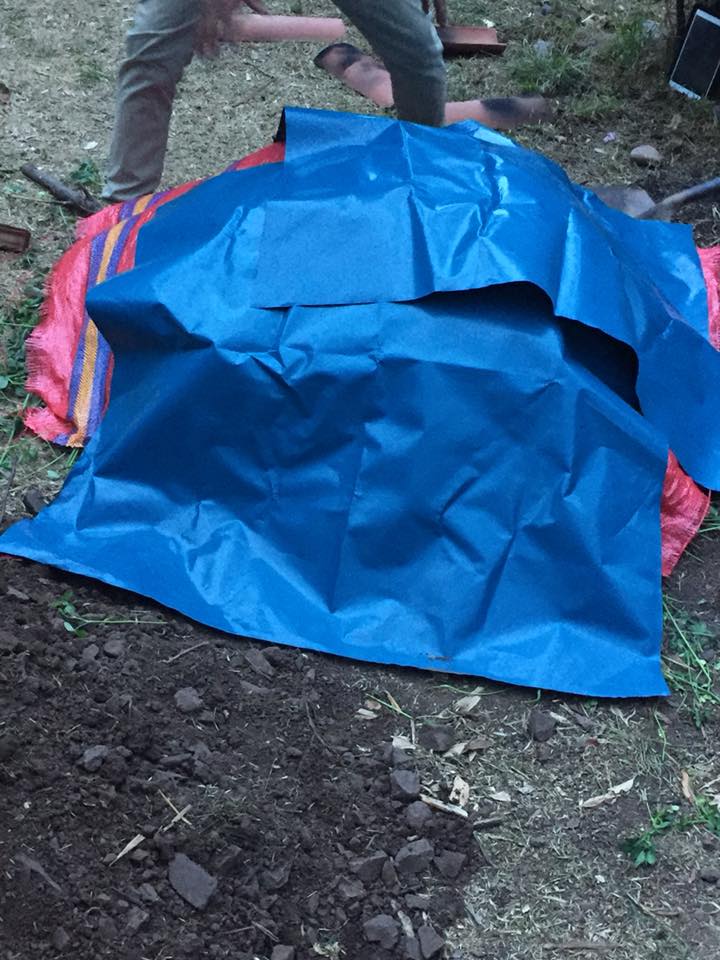
On goes the plastic.
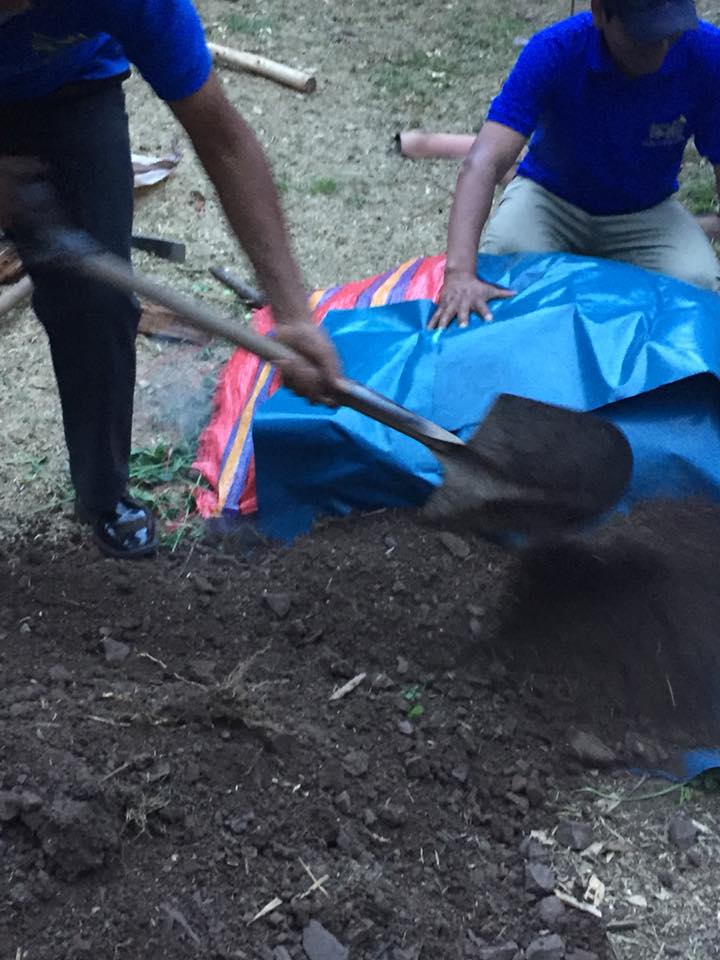
And then the dirt.
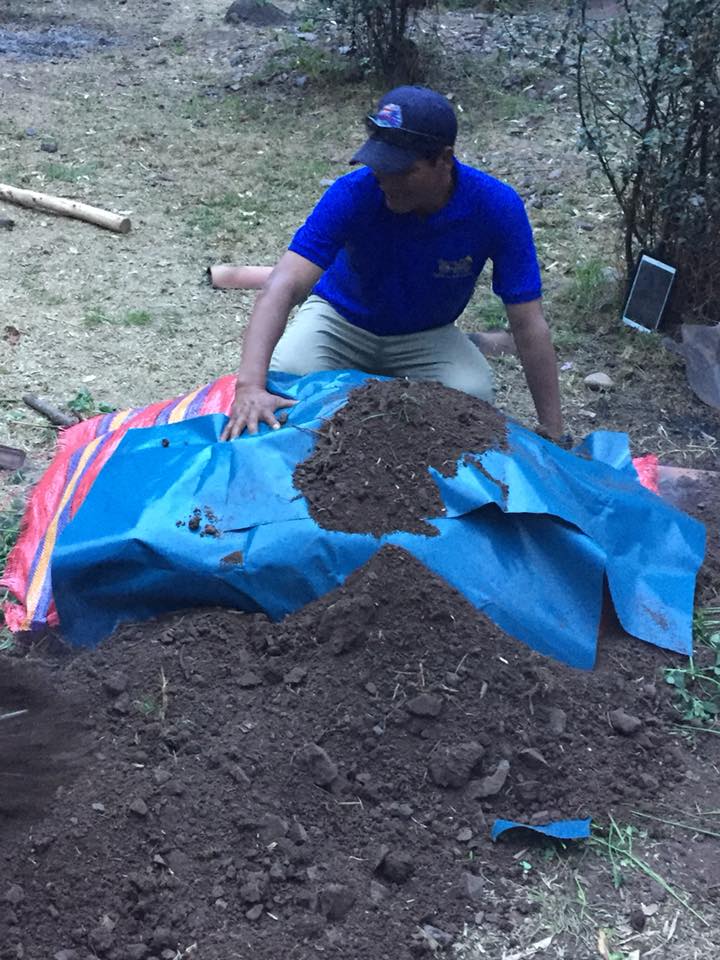
Getting there.
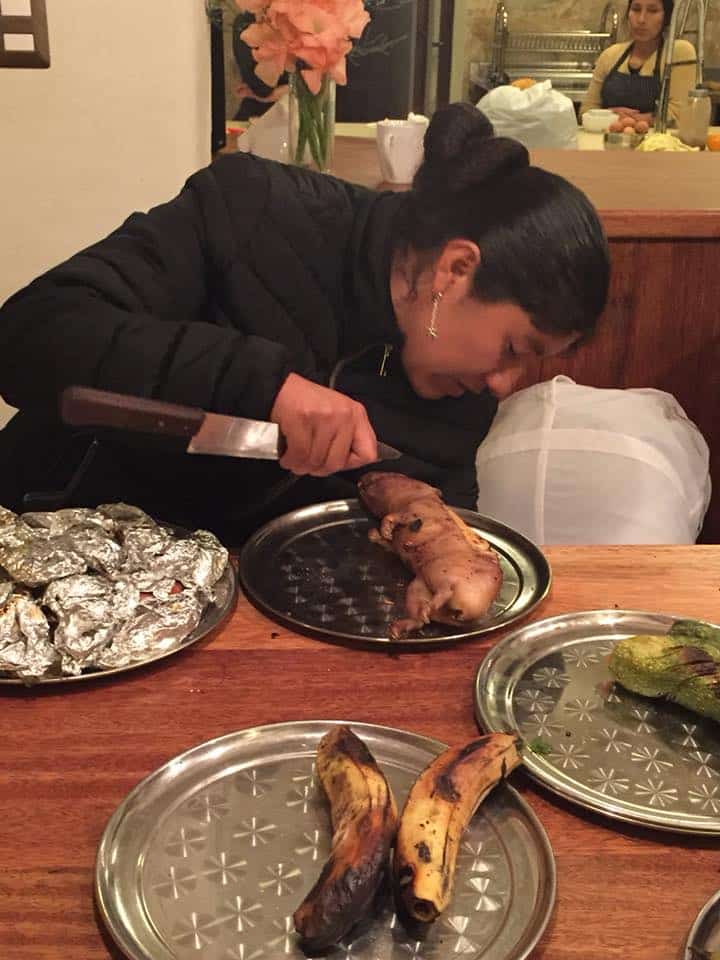
Carving the guinea.
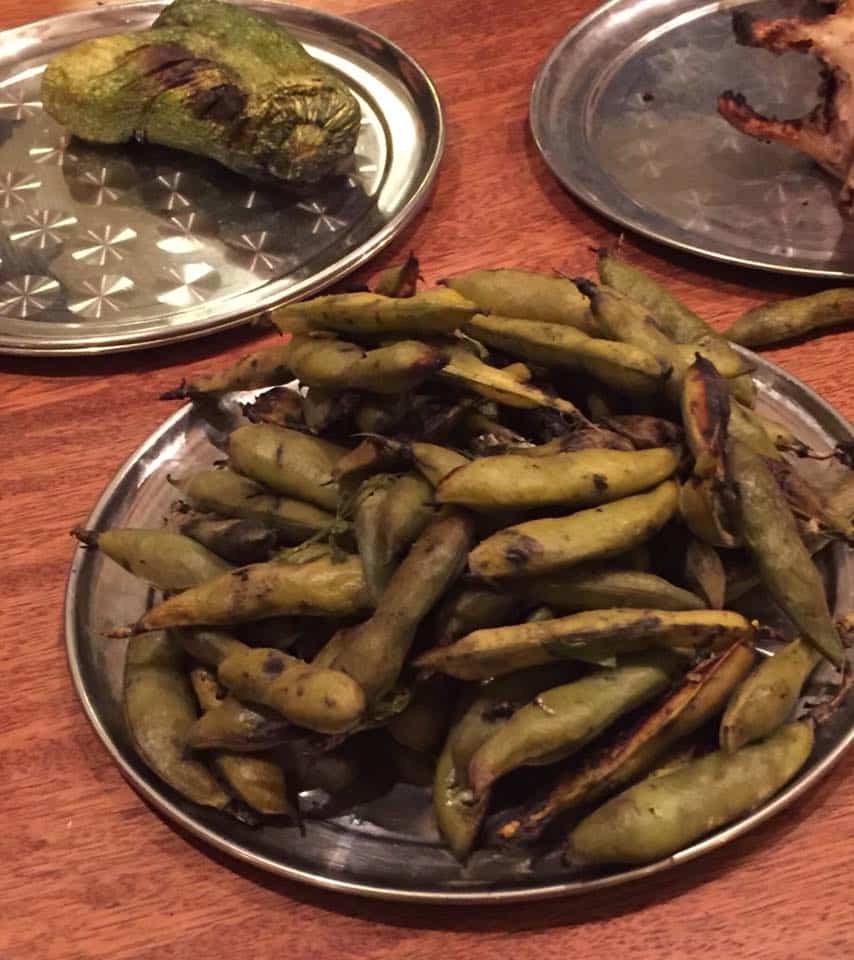
Fav as cooked to perfection.
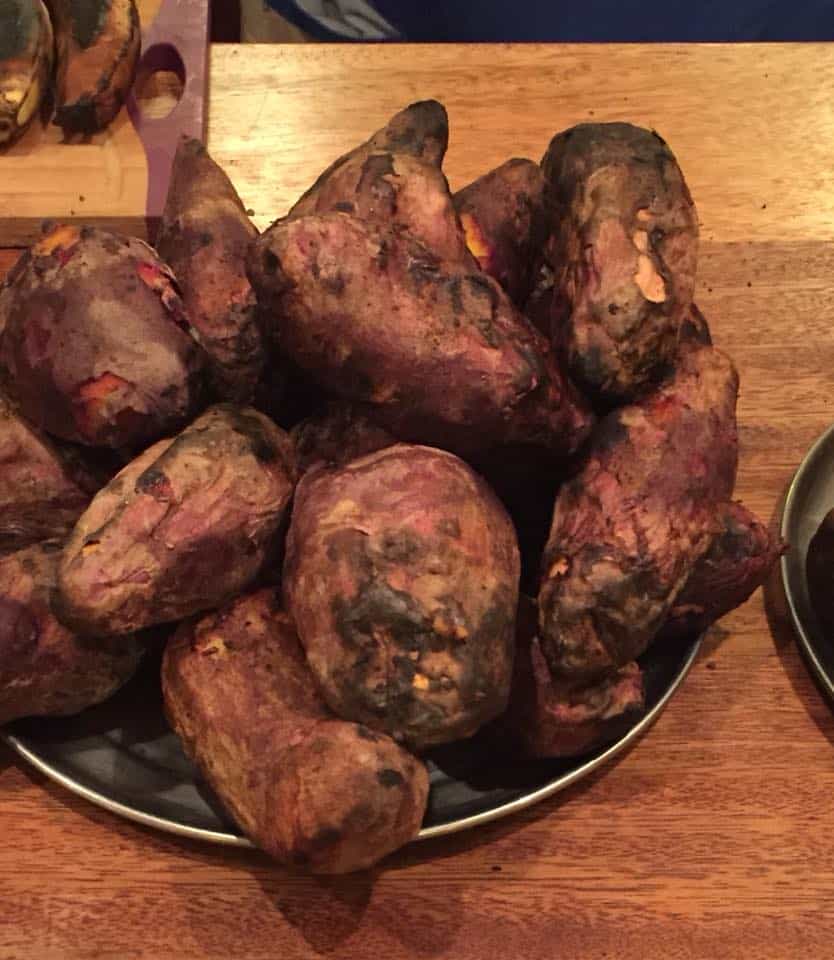
Yams.
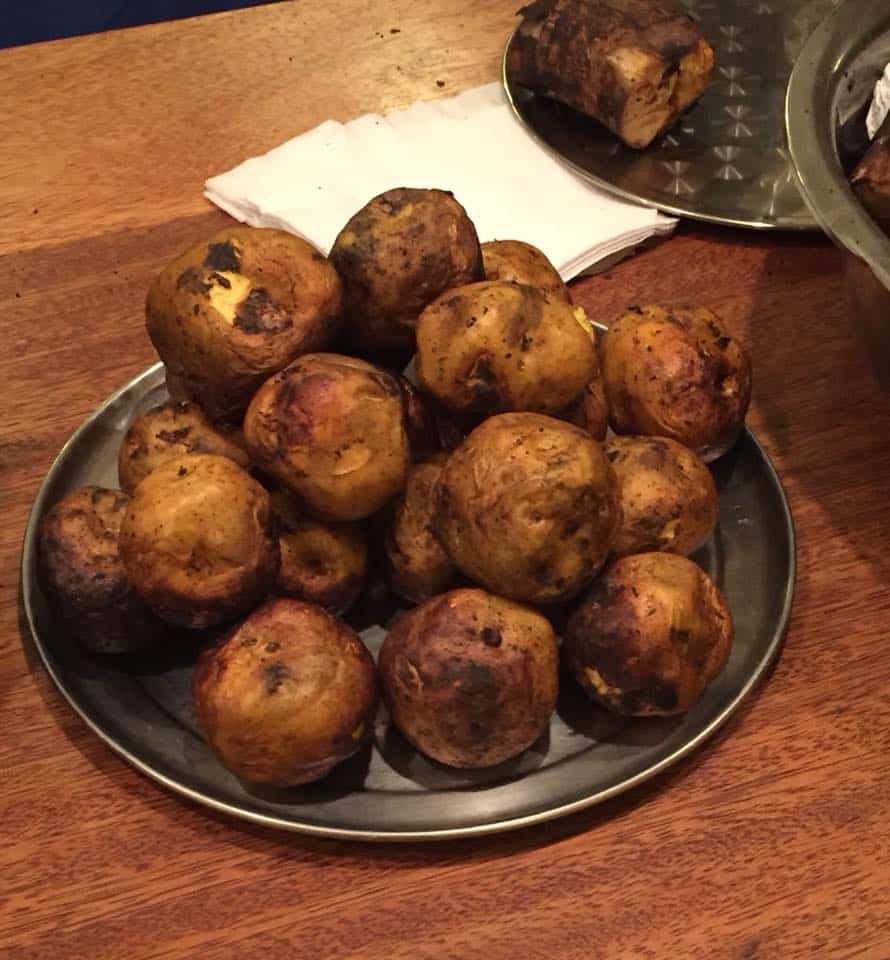
Potatoes.
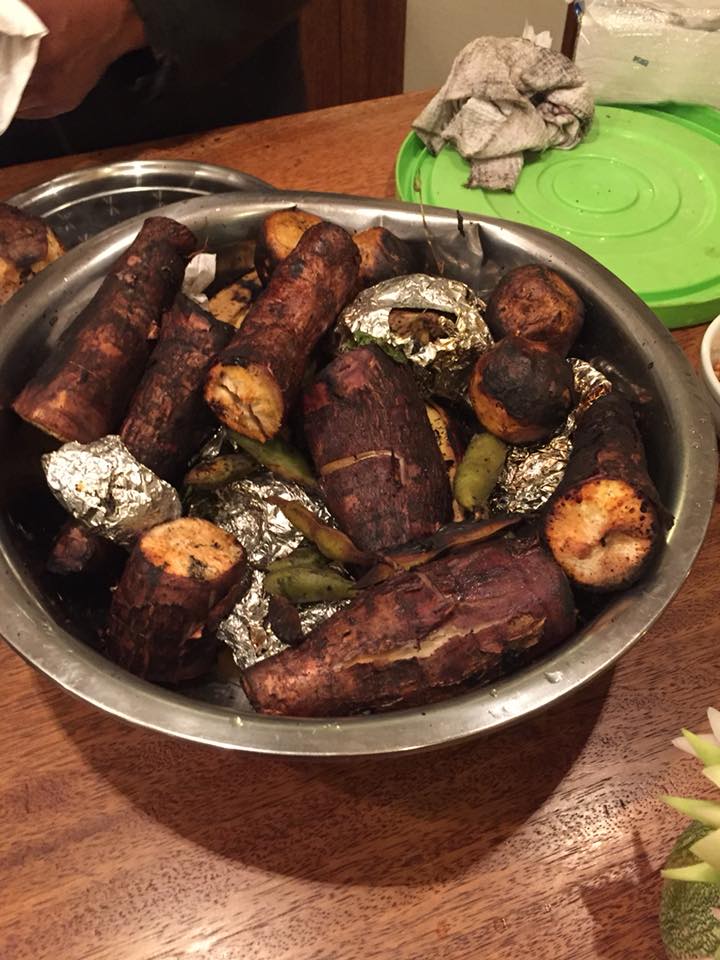
Yum.
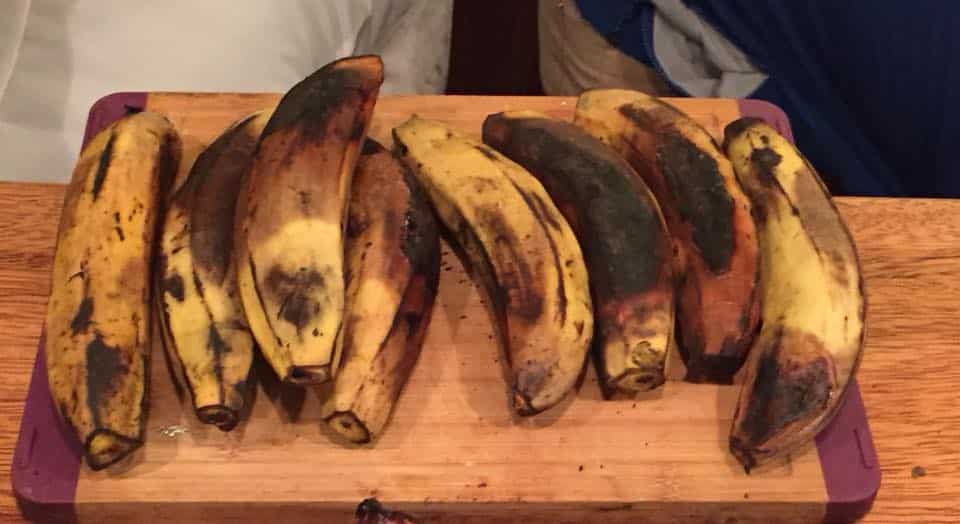
Bananas.
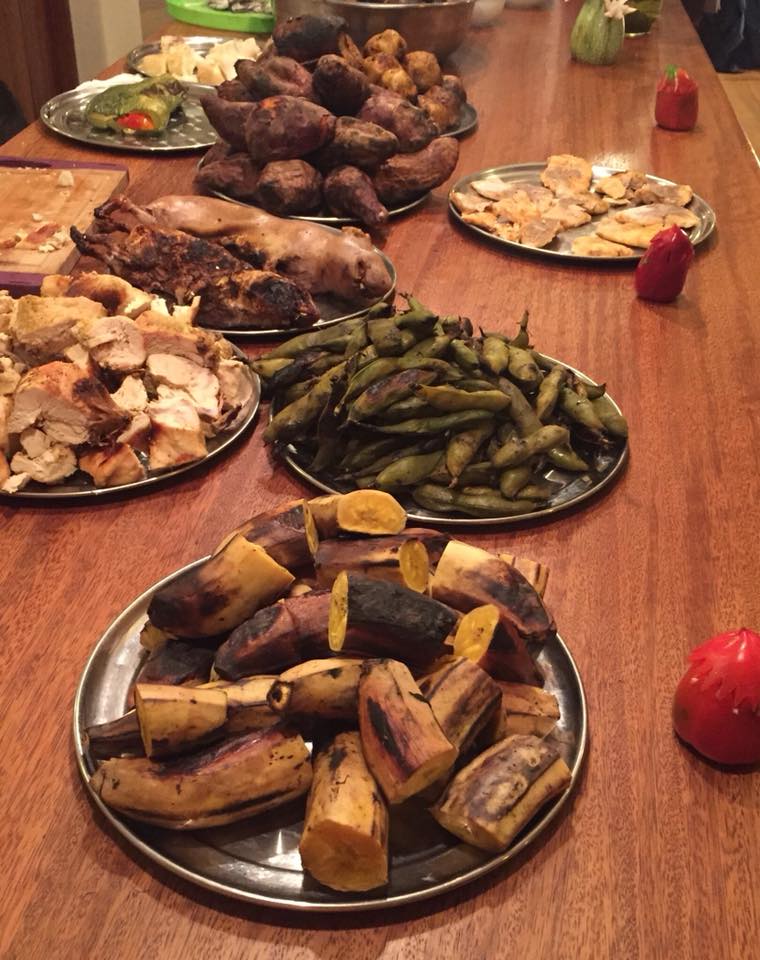
The feast.
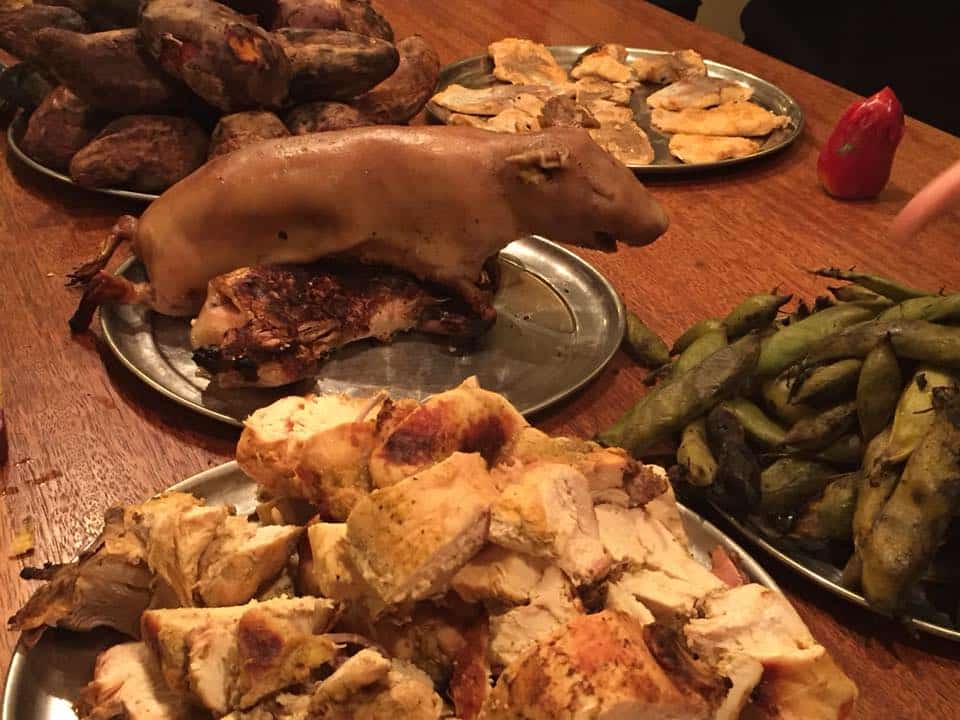
The guinea pig.

Check out this beautiful hand carved garnish.
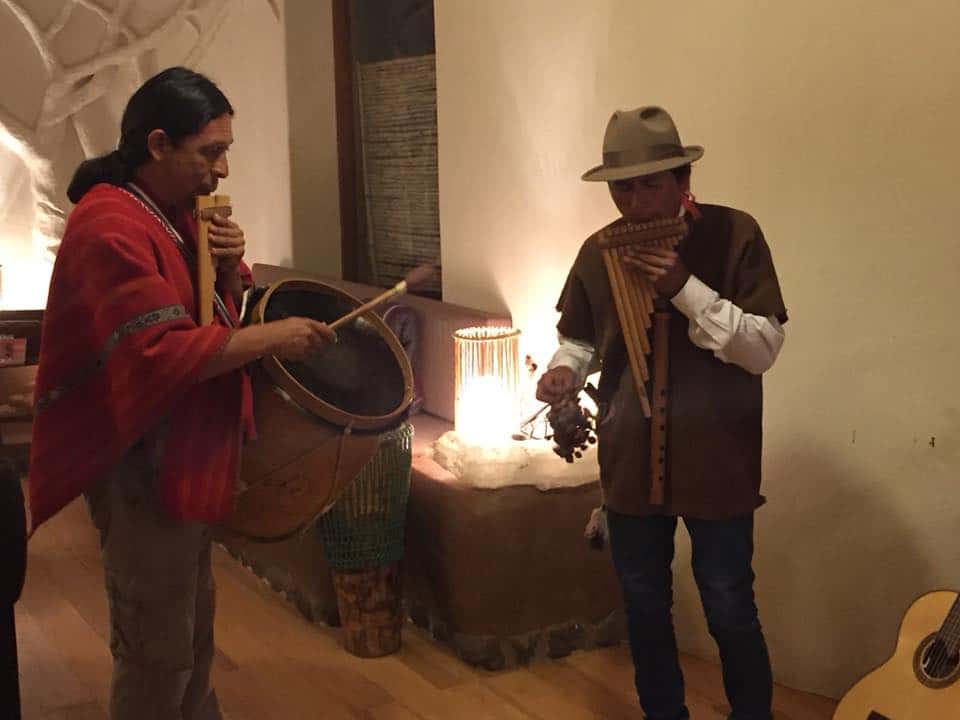
Our musicians.
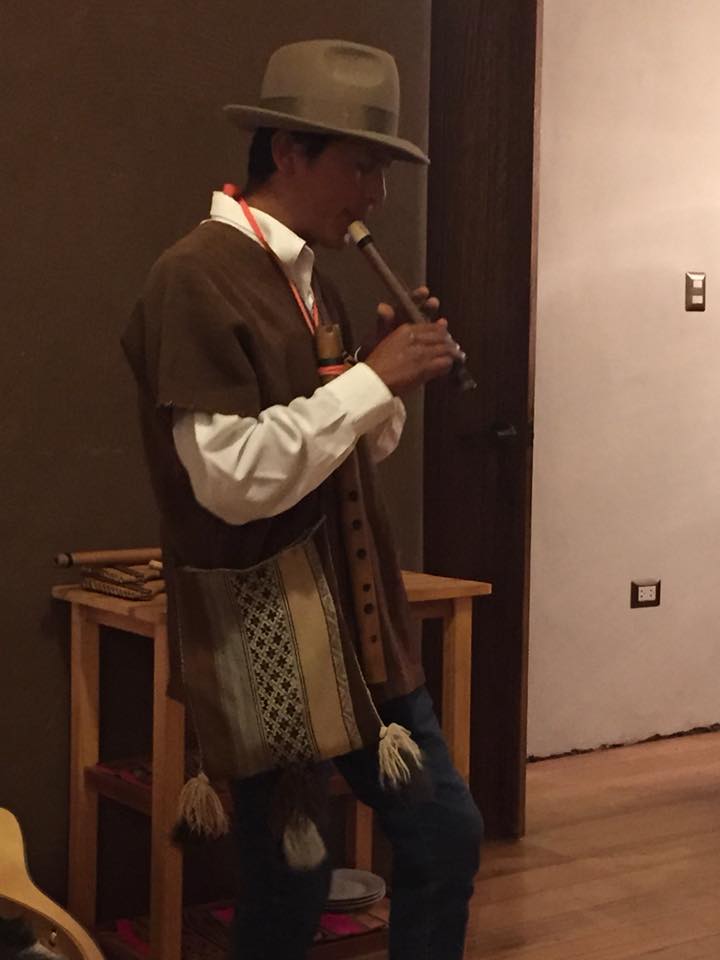
He played four kinds of flutes beautifully.
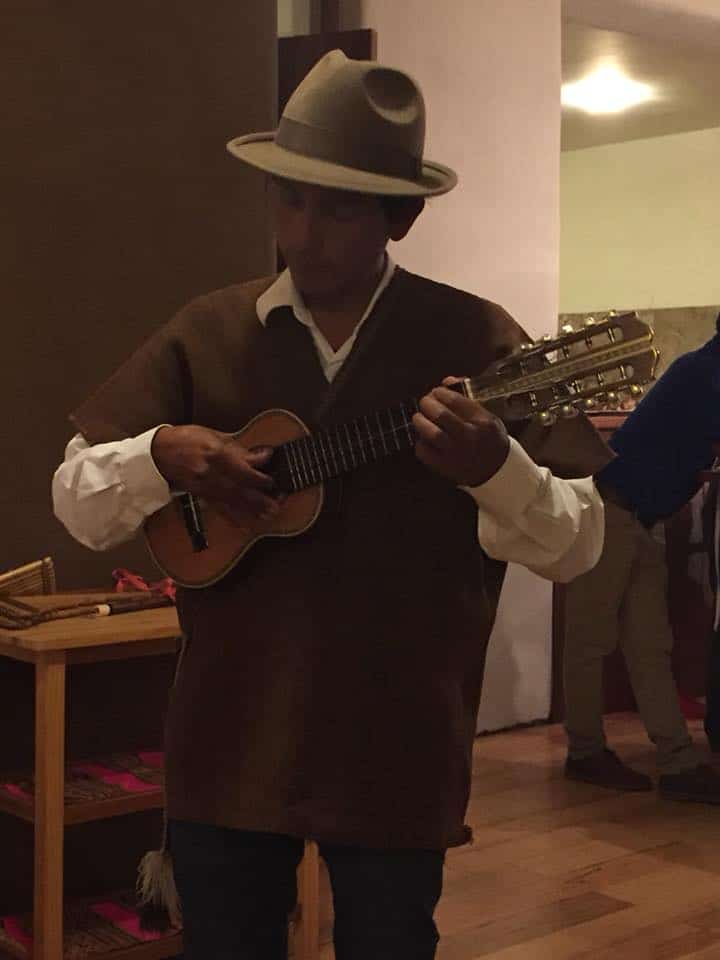
When the Spanish conquered Peru, they prohibited the Incas from playing guitar. So the Incas, who loved the music, built this small guitar, called a charango, because it could be easily hidden.
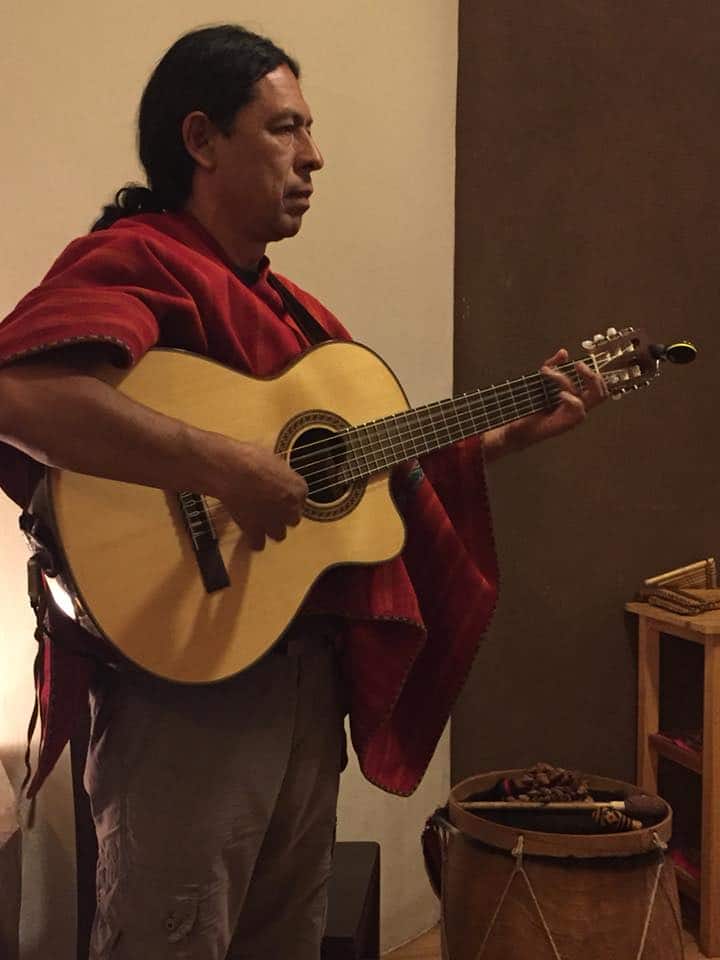
Beautiful man, beautiful music.
